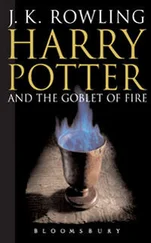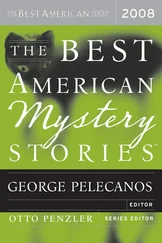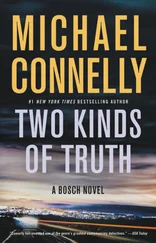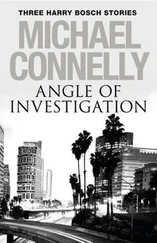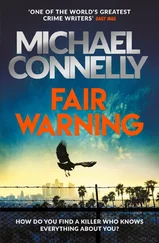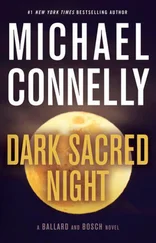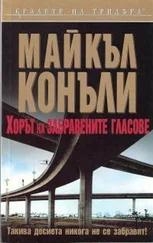She moved on from the chronology to fuller reports filed by the investigators based on the evidence collected and witness interviews. In the victim section of the murder book she read a bio authored by Talis and drawn from interviews and official documents. The victim’s mother and stepfather were still alive at the time of the killing. According to the written account, Sandra Hilton expressed no surprise at her son’s demise and said he had come back from his stint at Corcoran State Prison a different person. She said he seemed broken from the experience and wanted nothing more than to get high all the time. She admitted that she and her husband kicked John out of the house shortly after he returned from prison and appeared to be making no effort to integrate into society. He said he wanted to be an artist but did nothing to pursue it as a career. He was stealing from them in order to support his drug habit.
Donald Hilton stood by his decision to evict John from the family home in the Toluca Lake area. He was quick to note that John was his adopted son but was already eleven when Donald met Sandra and the two got married. His biological father had not been a part of John’s life for those first eleven years, and Donald said that behavioral problems were already deeply set in the boy. Lacking a blood relation to the young man he raised apparently allowed him to kick him out of the house later on without a guilty conscience.
A section of the report had been redacted with a black marker. Two lines in the middle of the interview summary were completely blacked out. This seemed odd to Ballard because a murder book was already a confidential document. The exception to this was when a case was filed and murder book documents became part of discovery and turned over to the defense. On some occasions redacting occurred to protect the names of informants and others. But this case had never resulted in charges, and it seemed odd to Ballard that an interview with the parents of a victim would contain any information that would need to be kept hidden or secret. She opened the binder’s rings and removed the page, studying the back to see if any of the redacted words could be read. Unable to make anything out, she put the page at the front of the binder to remind herself of the anomaly every time she opened the book: What information had been redacted from the case file? And who did it?
Ballard’s review of the other witness summaries produced only one notable question. Hilton had shared an apartment in North Hollywood with a man named Nathan Brazil, who was described as a production assistant at Archway Studios in Hollywood. Ballard knew the studio was on Melrose Avenue near Paramount — and near where Hilton was murdered. Brazil told the investigators that he was working the night of the murder on a film production and Hilton had dropped by the guarded entrance to the studio and asked for him. Brazil did not get the message until hours later and by then Hilton was gone. Presumably he left the studio and proceeded down Melrose to the alley where he was shot and killed. Brazil told investigators that it was unusual for Hilton to come to his workplace. It had never happened before and he didn’t know why Hilton did so or what he wanted.
It was another mystery within the mystery that Hunter and Talis had not solved.
Ballard looked at her notes. She had written down the names of several people she would have to run down and interview, if they were still alive.
Maxwell Talis
Donald Hilton
Sandra Hilton
Thompson widow
Vincent Pilkey, dealer
Dennard Dorsey, dealer/snitch — protected
Brendan Sloan, narcotics
Elvin Kidd
Nathan Brazil, roommate
Ballard knew that John Jack Thompson’s widow was alive, as well as presumably Maxwell Talis. Brendan Sloan was still around as well. Sloan, in fact, was well known to her. He had risen from narcotics detective to deputy chief in the twenty-nine years since the Hilton murder. He was in charge of West Bureau. Ballard had never met him but since Hollywood Division fell under West Bureau’s command, Sloan was technically her boss.
Ballard’s back was stiffening. It was a combination of a tough morning paddle into strong headwinds, a lack of sleep, and the hard wooden chair she had been sitting on for two hours. She closed the murder book, deciding to leave the remaining pages and reports for later. She reached down to ruffle Lola’s scruff.
“Let’s go see Double, girl!”
The dog’s tail wagged violently. Double was her friend, a French bulldog being boarded at the day-care center where Lola spent most nights and some days when Ballard worked.
Ballard needed to drop Lola off so she could continue to work the case.
Ballard’s first stop was Property Division, where she checked out the sealed evidence box marked with the John Hilton murder case number. She could tell right away that it was not a twenty-nine-year-old box and the sealing tape was not yellowed as would have been expected. The box had obviously been repacked, which was not unusual. The Property Division was a massive warehouse but still too small for all the evidence stored there. Consolidation was an ongoing project and old, dusty evidence boxes were often opened and repacked in smaller boxes to save room. Ballard had the evidence list from the murder book that she could use to make sure everything was intact — the victim’s clothes, personal belongings, etc. She was primarily looking for two things: the expended bullet retrieved from Hilton’s body during autopsy and the casing retrieved from the floor of his car.
She checked the sign-out sheet on the box and saw that, other than the repackaging that had taken place six years earlier, the box had apparently not been opened since it was placed in Property by the original two detectives — Hunter and Talis — nearly three decades before. This would generally not be unusual because no suspects had ever been developed, so there was no reason to analyze collected evidence in regard to a potential killer. Hunter and Talis had collected the evidence and had a list of the box’s contents in the murder book. They knew firsthand what they had. They had seen it and held it.
However, what Ballard did find curious was that John Jack Thompson, when he took possession of the murder book and apparently started working the case, had never gone to Property and pulled the box. He had never checked out the physical evidence.
It was literally the first move Ballard had made. Yes, she had the property list from the murder book, but she still wanted to see the evidence. It was a visceral thing, like an extension of the crime scene photos. It brought her close to the case, closer to the victim, and she could not see pulling and working a case without this necessary step. Yet Thompson, the mentor to two generations of detectives, had apparently chosen not to.
Ballard put the question aside and started going through the contents of the box, checking them off against the list from the murder book and studying each piece of clothing and every item gathered from the Corolla. She had seen something in the crime scene photos that she wanted to find: a small notebook that was in the console between the front seats of the car. An entry on the property list said simply notebook , with no description of its contents or any detail about why Hilton kept a notebook by his side in his car.
She found it in a brown paper bag with other items from the console. These included a lighter, a drug pipe, spare change amounting to eighty-seven cents, a pen, and a parking ticket issued six weeks before Hilton’s death. The parking ticket had been explored by the original investigators and there was a report in the murder book on their efforts. The ticket appeared to be a dead end. It had been issued on a street in Los Feliz where a friend of Hilton’s lived. The friend recalled that Hilton had visited to sell the friend a clock radio he said his stepfather had given him. But he ended up staying at the apartment for several hours when the friend shared a hit of heroin with him. While Hilton was nodding off in his friend’s apartment, his car was being ticketed. Hunter and Talis deemed the ticket irrelevant to the investigation and Ballard saw nothing that made her think otherwise.
Читать дальше
![Майкл Коннелли The Night Fire [Harry Bosch - 22] обложка книги](/books/405630/majkl-konnelli-the-night-fire-harry-bosch-22-cover.webp)
